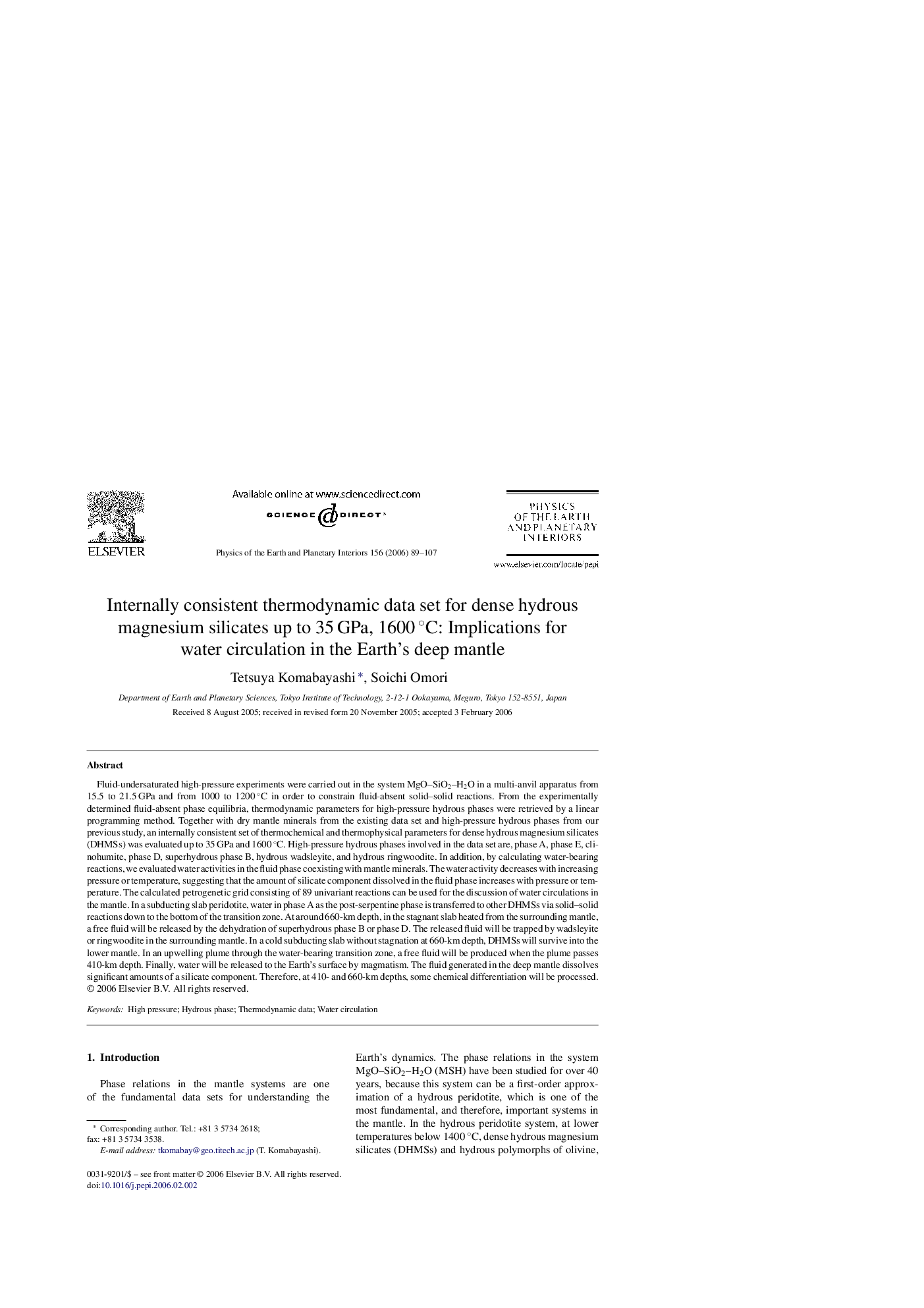| کد مقاله | کد نشریه | سال انتشار | مقاله انگلیسی | نسخه تمام متن |
|---|---|---|---|---|
| 4742946 | 1641604 | 2006 | 19 صفحه PDF | دانلود رایگان |

Fluid-undersaturated high-pressure experiments were carried out in the system MgO–SiO2–H2O in a multi-anvil apparatus from 15.5 to 21.5 GPa and from 1000 to 1200 °C in order to constrain fluid-absent solid–solid reactions. From the experimentally determined fluid-absent phase equilibria, thermodynamic parameters for high-pressure hydrous phases were retrieved by a linear programming method. Together with dry mantle minerals from the existing data set and high-pressure hydrous phases from our previous study, an internally consistent set of thermochemical and thermophysical parameters for dense hydrous magnesium silicates (DHMSs) was evaluated up to 35 GPa and 1600 °C. High-pressure hydrous phases involved in the data set are, phase A, phase E, clinohumite, phase D, superhydrous phase B, hydrous wadsleyite, and hydrous ringwoodite. In addition, by calculating water-bearing reactions, we evaluated water activities in the fluid phase coexisting with mantle minerals. The water activity decreases with increasing pressure or temperature, suggesting that the amount of silicate component dissolved in the fluid phase increases with pressure or temperature. The calculated petrogenetic grid consisting of 89 univariant reactions can be used for the discussion of water circulations in the mantle. In a subducting slab peridotite, water in phase A as the post-serpentine phase is transferred to other DHMSs via solid–solid reactions down to the bottom of the transition zone. At around 660-km depth, in the stagnant slab heated from the surrounding mantle, a free fluid will be released by the dehydration of superhydrous phase B or phase D. The released fluid will be trapped by wadsleyite or ringwoodite in the surrounding mantle. In a cold subducting slab without stagnation at 660-km depth, DHMSs will survive into the lower mantle. In an upwelling plume through the water-bearing transition zone, a free fluid will be produced when the plume passes 410-km depth. Finally, water will be released to the Earth's surface by magmatism. The fluid generated in the deep mantle dissolves significant amounts of a silicate component. Therefore, at 410- and 660-km depths, some chemical differentiation will be processed.
Journal: Physics of the Earth and Planetary Interiors - Volume 156, Issues 1–2, 16 June 2006, Pages 89–107